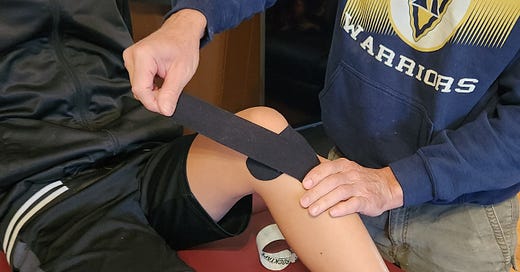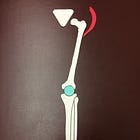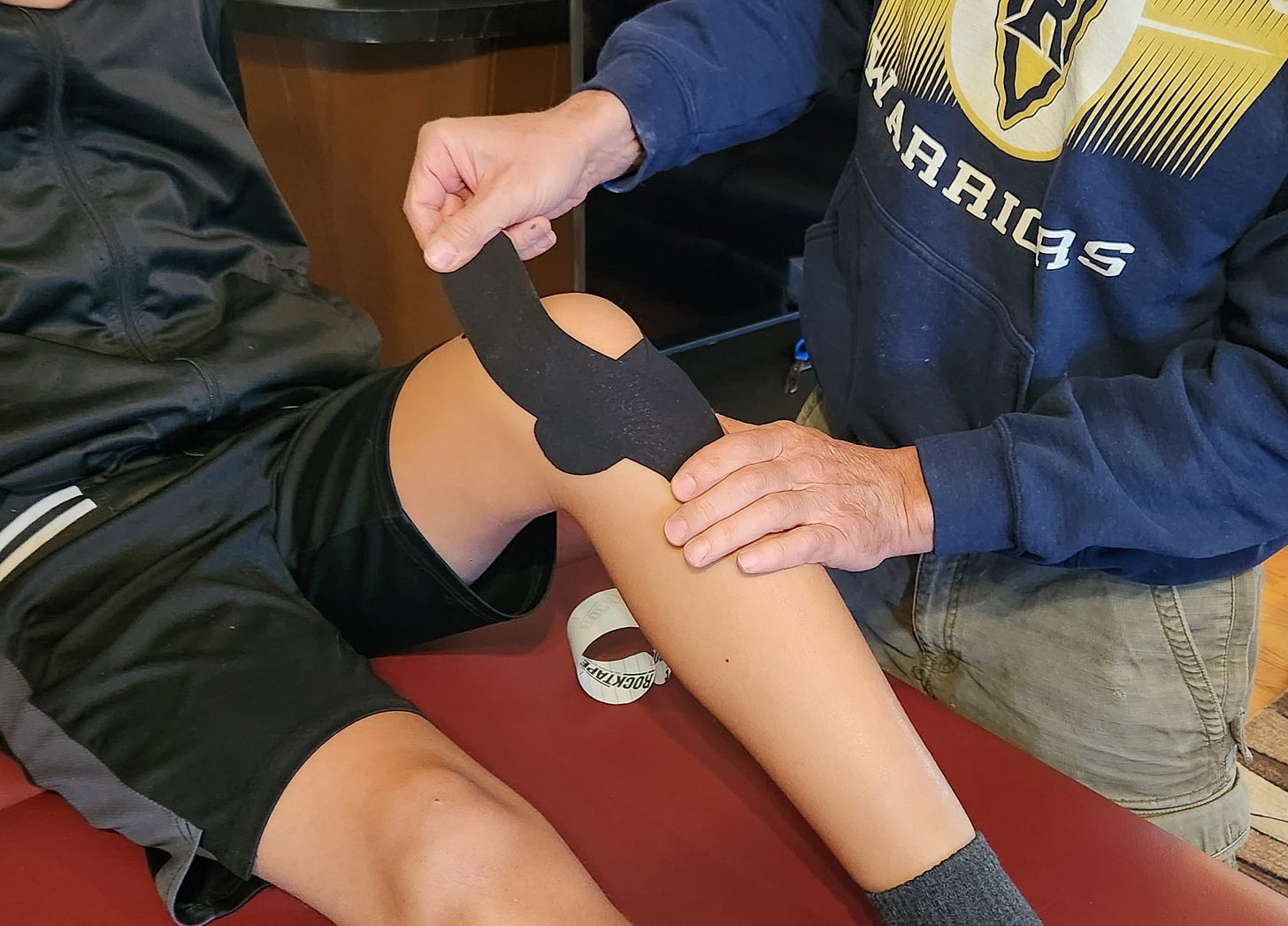This is not medical advice.
This article cannot tell you specifically why you have knee cap (patella) pain. You need to see a doctor or therapist first.
I can tell you what I have seen in practice. I’m going to review some of the common themes and what those cases have done to decrease their symptoms.
Maltracking
This refers to how the knee cap aligns in the groove, in relation to the other bones in the knee joint. The pain results from the knee cap not riding in it’s assigned groove. Sometimes this is affected by posture. Women have wider hips, and this angle affects the knee alignment. People who are knock kneed or have weak hip and knee muscles can also have poor knee cap groove alignment.
Ideally we strengthen the muscles in the hips and knee to improve alignment. This can take weeks of strengthening, but is a good course of treatment as it addresses the root cause of the problem, and is more likely to remain pain free. The first link below is a more in depth explanation of alignment, the second link has some exercises.
There are some tape jobs with Leokotape which may also help. This needs to be addressed in person by a professional. This is a short term band aide, until the hip and knee muscles do their job.
Click here to watch a video of Leukotape application
Osteoarthritis
This would need to be addressed by the doctor, and most likely by x-ray. In those cases I advise people to try a heating pad to decrease pain, and see if they can ride a stationary bike without pain. Most arthritis feels better with constant gentle range of motion.
Tendonitis
The quadricep muscle attaches to the top pole of the patella by tendon. Some people will have pain or tendonitis at this site. I find that most people have pain or tendonitis at the lower pole, where it attaches to the tibia, or lower leg.
This usually arises from weakness of the associated muscles, or an increase in activity. Teenagers will develop this with growth spurts, where the bone length is growing rapidly, pulling on tendons.
Mostly, I want people strengthening those muscles, and/or constant pain free range of motion on a stationary bike. Isometrics are also warranted, however that can be a hard sell. It’s easier to have them ride a bike, provided symptoms are not worsening.
There are also some good tape jobs to unweight that tendon. Again, a band aide and temporary relief. That is kinesiotape being shown above. It is elastic, and I am simply pulling with some tension to unweight the tendon pull on the bone. There is a piece of tape across the patellar tendon, and on both sides of the knee cap.
An argument could be made that temporarily unweighting the tendon with tape is allowing it to heal faster, though that may not be proven. The original pain started due to weakness, or weakness in relation to what we were asking the muscles and tendons to do.
Osgood Schlatter
This is not technically at the knee cap, yet is painful at the patellar tendon insertion. There is pain and swelling at that bump, or tibial tuberosity just below the knee cap. I had this at the age of 13 and it was very painful with sports, and to the touch. My friends learned of this affliction, and would purposely hit me there (bullying!)
Ice
Ice is the old stand by parroted by all of us who want to sound important, (“make sure you stretch first!”) Maybe it will help decrease some pain, but in the big picture, a stationary bike might be better.
Inflammation is what heals our body. Ice and anti-inflammatories decreases inflammation. Ice is passive, the bike is active.
I try and reserve ice for large amounts of swelling and/or limping associated with pain.
Sounds
Some knee caps make lots of noise, or grinding sounds. In the absence of pain, I largely try to have the patient ignore the worry of these sounds, and focus more on what they can do about it. Sounds are usually linked to the maltracking and/or osteoarthritis, and is called crepitus.
If the sounds are also painful, that is a different story, and needs to be addressed by the doctor first. There are pain free sounds, and then there are painful sounds with a “shifting or clunking.” That might be an unstable knee joint, and needs to be looked at.
Patellar retinaculum sprain
There is a web of connective tissue that surrounds the knee cap. I have seen some people sprain this tissue with sports injuries. It causes pain. I like to massage those knees, and again, have them do continuous pain free active range of motion on a stationary bike, plus any strengthening they will tolerate.
This case can present similar to the maltracking, as the sprain of that tissue causes the patella to lose some stability. It frequently goes undiagnosed, and does not show up on x-ray.
Dislocations of the patella
This is of course more serious and is usually reduced at the emergency room. If a person is referred for physical therapy, the main goal will be to strengthen the muscles and try to prevent further dislocations. The more frequently this happens, the worse it gets and the probability of it happening again increases.
You can have multiple problems at once
It’s rare to have just one issue. Typically there are some alignment issues, possible history of dislocations or tendonitis, muscle weakness, etc.









Great info Mike. I acquired a patellar tendinopathy last year through overuse - riding my Peloton bike at low cadence like Dr Peter Attia advised us oldies. In fact I was trying to keep up with the 60 and 70 year olds on the Peloton platform! (If they can do it I can do it) Woops! I immediately sought Physio assistance when it was still a niggle and got exercises to strengthen VMO glutes etc. Took a long time to heal but now I am fine again. I am using Pilates to keep the strength up even before I get back to squats and lunges. I never want to damage it again.